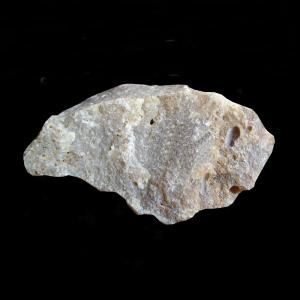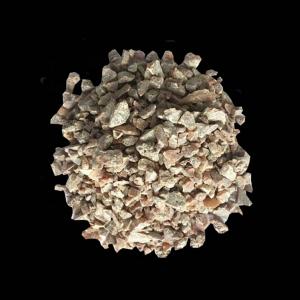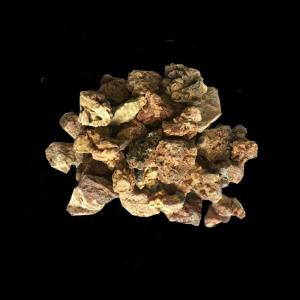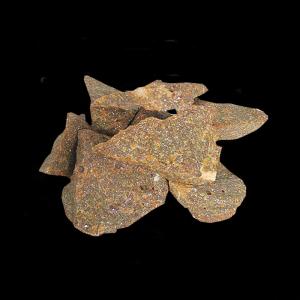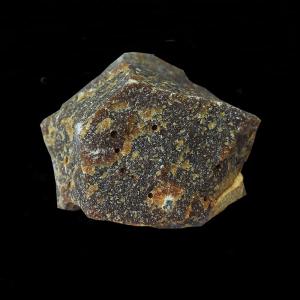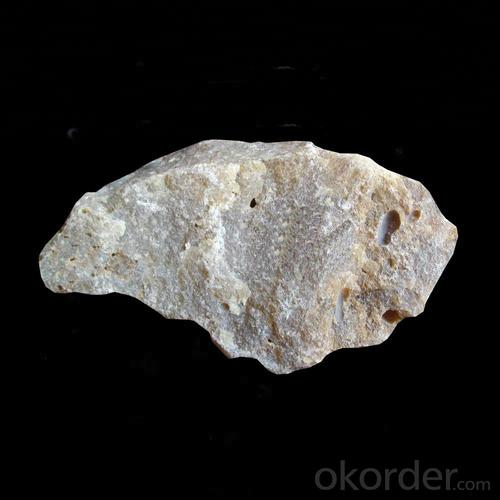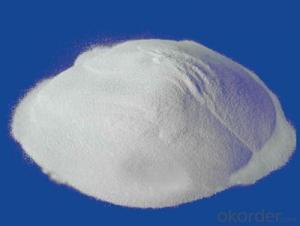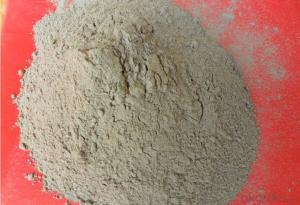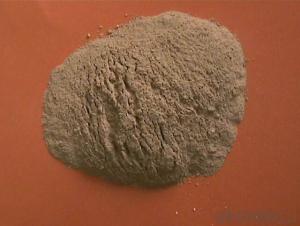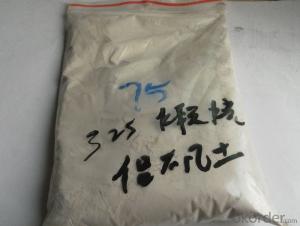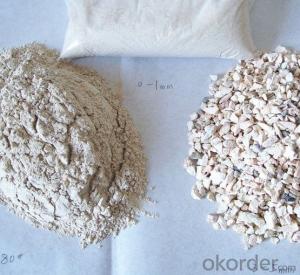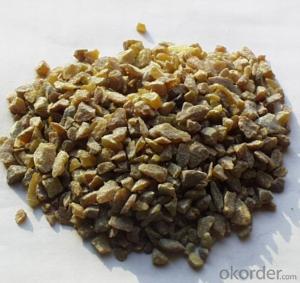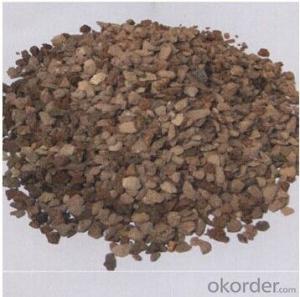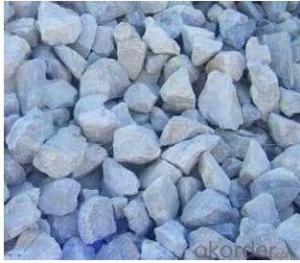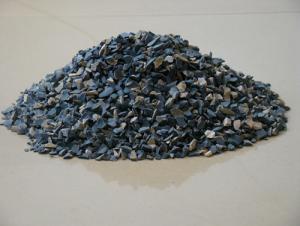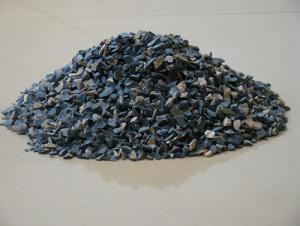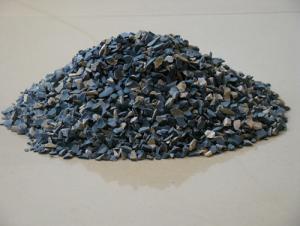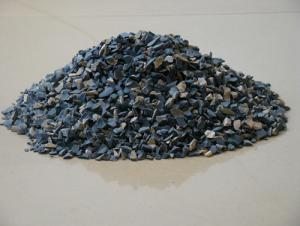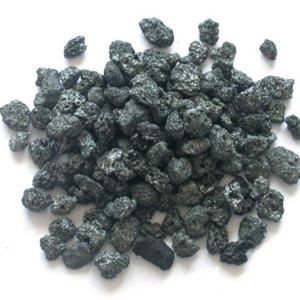Fused Magnesite Refractory Bricks Raw Material
- Loading Port:
- China main port
- Payment Terms:
- TT or LC
- Min Order Qty:
- 25 m.t.
- Supply Capability:
- 1000 m.t./month
OKorder Service Pledge
OKorder Financial Service
You Might Also Like
Product Description
Quick Details
Place of Origin: Liaoning, China
Application: Refractory
Shape: Block
Material: Magnesite
Chemical Composition: Mgo;CaO;SiO2
Mgo:96%-97%
Product name: FM
Payments terms: 1. 100% L/C at sight 2. 30% T/T prepayment, balance against BL copy
Delivery Time: Within 30 days after receiving L/C or 30% T/T prepayment
Usage: Metallurgy, Foundry, Abrasive, Refractory, Deoxidizer
Advantage: Timely Shipment, High quality, Good performance
Packing: 1mt/bag or as customers' requirements
Size: 0-30mm etc
Sample supply: free sample
Color: Brown, white
MOQ: 25Mt
Supply Ability
Supply Ability:1000 Metric Ton/Metric Tons per Month
Grade | MgO | SiO2 | CaO | Fe2O3 | Al2O3 | Loi | B.D g/cm3 |
Dicalcium-fused magnesium | 97.00 | 0.70 | 1.40 | 0.60 | 0.20 | 0.10 | 3.30-3.36 |
96.50 | 0.85 | 1.60 | 0.70 | 0.20 | 0.15 | 3.20-3.30 | |
96.00 | 0.95 | 1.90 | 0.80 | 0.23 | 0.12 | 3.20-3.30 | |
Common fused magnesite | 97.20 | 0.80 | 1.10 | 0.60 | 0.20 | 0.10 | 3.30-3.36 |
96.50 | 1.20 | 1.30 | 0.70 | 0.20 | 0.10 | 3.20-3.30 | |
96.00 | 1.40 | 1.50 | 0.80 | 0.20 | 0.10 | 3.20-3.30 | |
Size | 0-1mm, 0-30mm, 1-15mm, 1-30mm, 200mesh or according to customer's requirements. | ||||||
Plant photos:
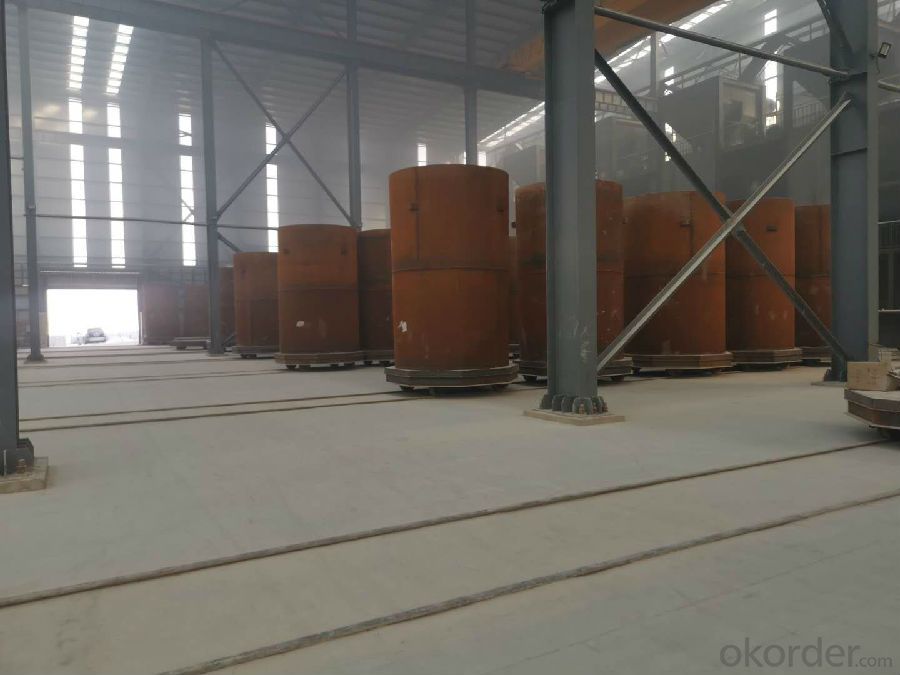
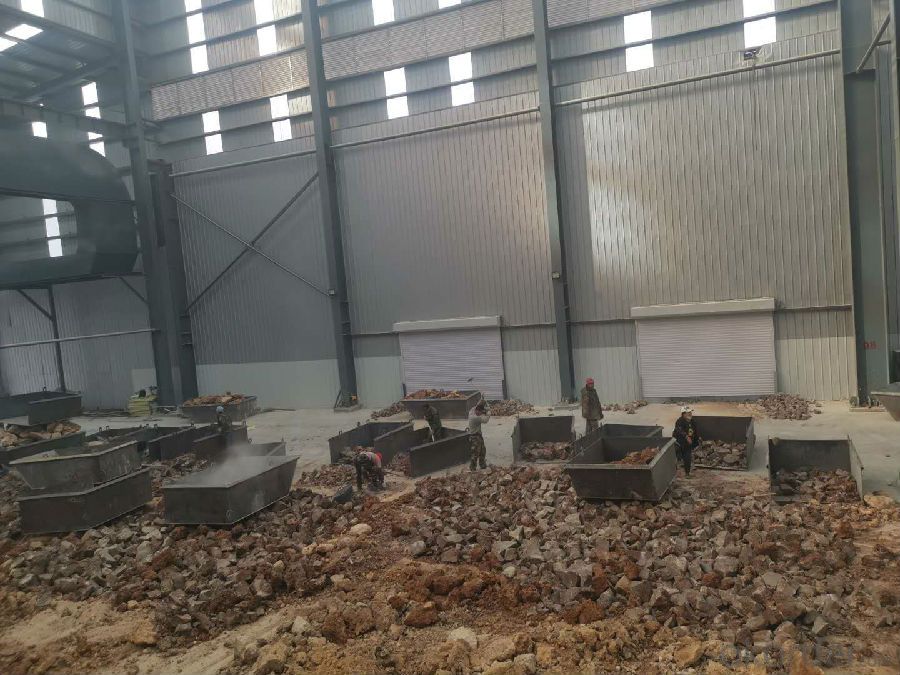
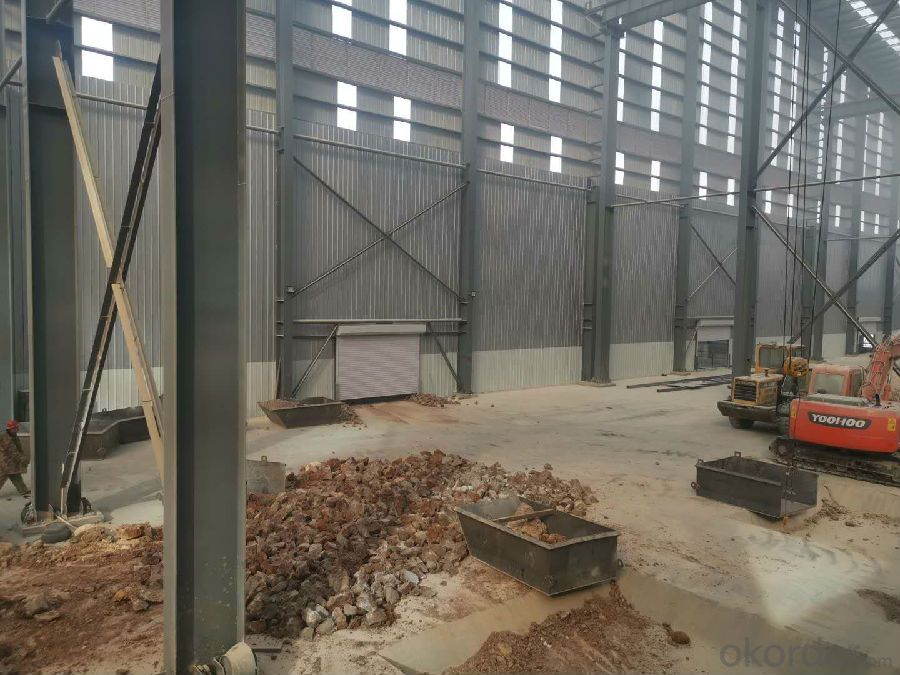
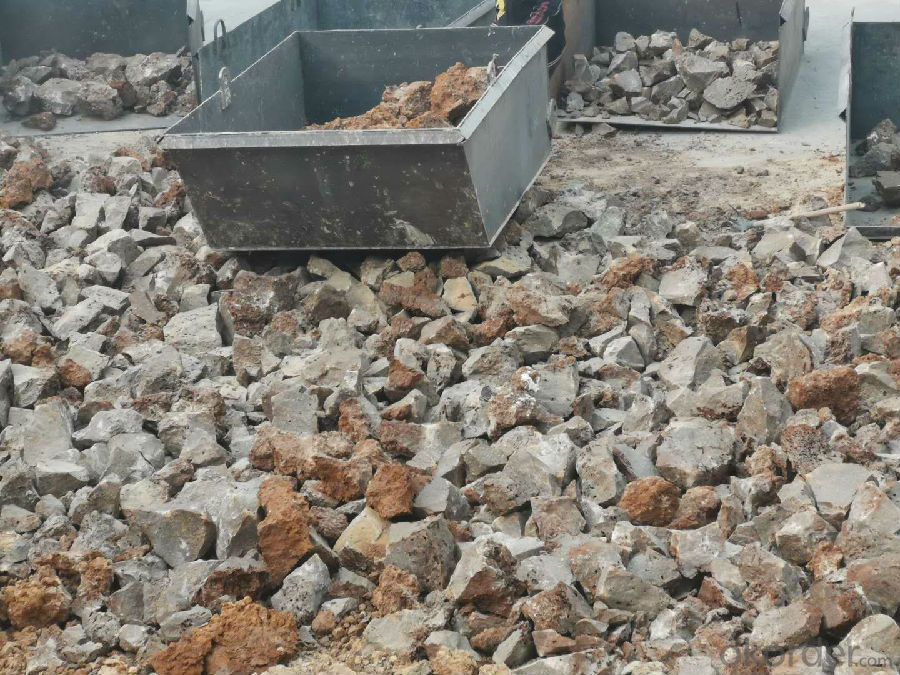
Packaging & Delivery
Packaging Details1MT/bag or as customers' requirements.
Port Main port of China
Loading:
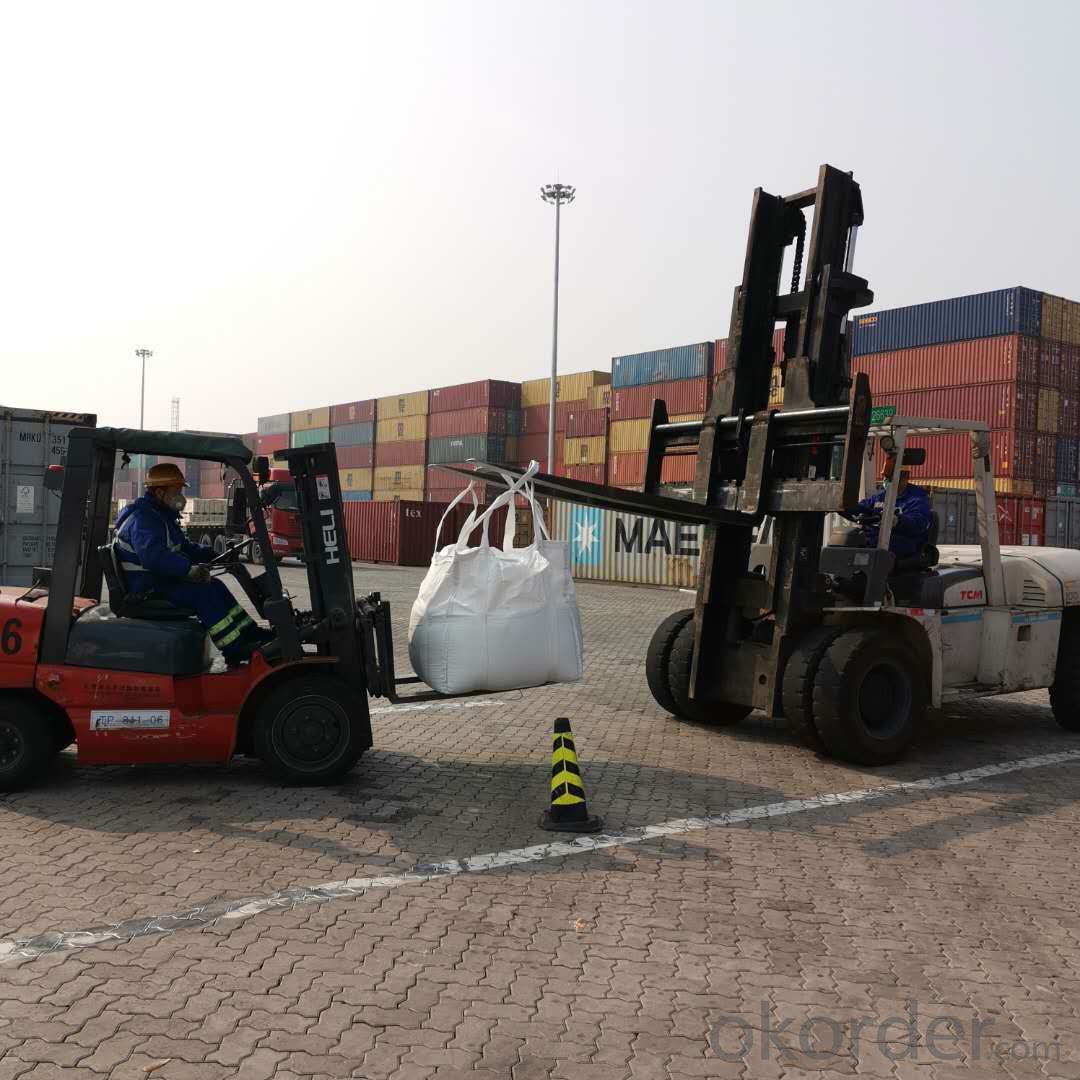
What is fused magnesite?
Fused magnesite is produced by high quality magnesite through electro- fusing, After melting, the SiO2 of material moves to the surface for the difference in the specific, so it has well grown crystals, well crystal perfection and structure homogeneity, excellent chemical stability, good corrosion resistance to slag and high strength at high temperature.
Where to apply fused magnesite?
It is widely used for gunning materials, fused magnesite ramming material, magnesite brick, magnesite chrome brick, vacuum and vacuum induction furnace, electric arc furnace refractory lining, magnesia crucible, furnace and a variety of refractory, such as large scale glass furnace by floating method, electrical furnace, convert furnace, house hold electrical appliances as electrical insulating materials,
- Q: Can anyone tell me what is A-leve fireproof material?
- What you say is probably palstic! B-level means the fireproof rating is at B1-level because palstic material doesn't belong to fireproof materials. It only is fire?retardant. When wholesaling all kinds of insulation materials and construction, it need tos look at the names. B1-level refers to the fire endurance rating of the fireproof material, which is determined according to the fire resistance of the material. In addition, different parts of the material have different fire endurance ratings! You can download a "Specifications of Fireproof Design for Buildings" for further information!
- Q: Who knows how many fire heat preservation material are there?
- Fire proof board is a fire refractory building material for surface decoration, widely used in interior decoration, furniture, kitchen cabinets, laboratories mesa, walls and other fields. Fire board is base paper (titanium powder paper, kraft paper) processed by melamine and phenolic resin, high temperature and high pressure. 1 mineral wool board, glass wool board: mineral wool, glass wool insulation. It does not burn itself, have good performance such as high temperature resistance, light quality. Such plate have evolved into plate with inorganic adhesive material as base material, mineral wool, glass wool as reinforcing material plate. 2 cement board: High strength, wide source. In the past, it is used to make fire prevention ceiling and partition wall, but its fire resistance is poor. Cement concrete component has good heat insulation and sound insulation performance. It can be used as the partition wall and the roof panel.
- Q: What is the fire resistance thickness of the thin fire-retardant coatings?
- There is no detailed requirement on the thickness of the thin steelwork fireproof coatings in the "Code for application technology of steelwork fireproof coating", and the thickness there refers to a certain thickness which must(at least) have fire resistance for a certain time. The thickness of fireproof coatings in engineering generally depends on the manufacturer's test reports. Our thin steelwork fireproof coatings: the fire resistance is 2.5 hours, the thickness is 4.9 mm, the fire resistance is 2.0 hours, the thickness is 3.5 mm, the fire resistance is 1.5 hours, the thickness is 1.75 mm, the fire resistance is 1.0 hours, the thickness is 1.17 mm.
- Q: How to distinguish between class A fire resistant door and class B fire resistant door from appearance ? What are the differences between the two refractories? Thank you !
- It is difficult to distinguish from appearance. Their fire endurance are also different. The filling refractories of grade A and Grade B fire resistance steel doors are all perlite. The only difference lies in the filler compaction density.
- Q: What are the physical properties of refractory material?
- The mechanical properties of refractory material include compressive strength, volume density and sclerosing, slag resistance, elastic modulus, thermal shock resistance, oxidation resistance, bibulous rate, fluidity, resilience, bond strength and slump, electrical conductivity, specific heat, heat capacity, the impact strength, linear change, torsional strength, stomatal aperture distribution, resistance to acid, etc. The use performance of refractory material include refractoriness, thermal emissivity, condensation, porosity, coefficient of thermal expansion. Thermal properties of refractory material include thermal conductivity, temperature conductivity, plasticity, the hydration resistance, creep performance. The physical properties of the refractory materials include structure performance, mechanical properties, shear strength, load softening temperature, CO erosion resistance. The structure properties of the refractory materials include porosity, alkali resistance and sintering. The operating performance of refractory material include consistency, tensile strength, the use performance and operating performance, wear resistance, bending strength, thermal properties.
- Q: Is the ball mill used in production of refractories?
- It depends on what refractory you produce.
- Q: What kind of material is refractory bauxite?
- Refractory bauxite, also known as bauxite alumina or bauxite with high alumina, is the main raw material for the production of high alumina (aluminum content ≥48%, belongs to LAS) refractory.
- Q: About the use of horseshoe glass kiln refractories
- the lower portion of advanced clay brick, the lower portion of magnesia-chrome brick arch - high-purity silica brick; flue - clay brick; breast wall--33 # fused zirconia corundum brick (with shrinkage); fused zirconia bottom --33 # fused zirconia corundum brick (with shrinkage); regenerative chamber- the upper part of sintered magnesia-chrome brick, cooling section 33 # electric?smelting no shrinkage fused zirconia corundum brick; the wall - the melting section 41 # no shrinkage fused zirconia corundum brick (including 41% of zirconium; the lattice- superstructure of high purity magnesia brick, the same below); small stove --33 # fused zirconia corundum brick (with shrinkage). It can be said that it is the maximum configuration, if the funds is limited it can be downshift appropriately.
Send your message to us
Fused Magnesite Refractory Bricks Raw Material
- Loading Port:
- China main port
- Payment Terms:
- TT or LC
- Min Order Qty:
- 25 m.t.
- Supply Capability:
- 1000 m.t./month
OKorder Service Pledge
OKorder Financial Service
Similar products
Hot products
Hot Searches
Related keywords
